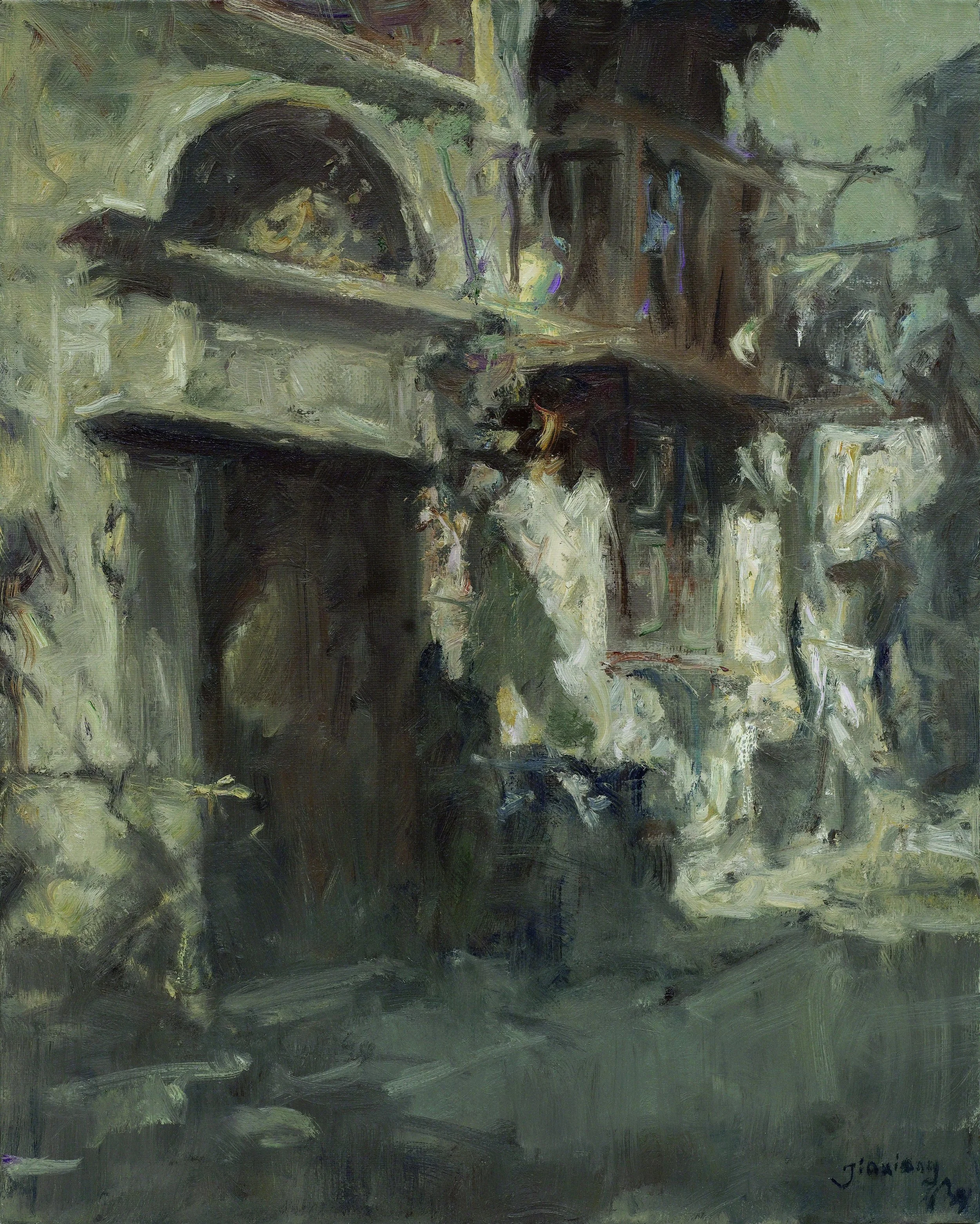Transformation I
Comeback - Horse Series
Oil on Canvas
75*62 cm
2015
From before 2019 to after 2023, BEI Jiaxiang’s artistic style has undergone a stunning transformation. Whether it’s his nostalgic depictions of old Shanghai or his fondness for horses, the traces of his past work are now hard to find. The change in style is so drastic that it seems as if the works were created by two different artists.
Striding - Horse Series
130*88 cm
2024
“When the surface style differs, what actual changes occur beneath?” This is a question that art historians have pursued throughout their careers. In the case of BEI, the concept of Kunstwollen or Artistic Will, proposed by the foundational figure of Western art history, Aloïs Riegl (1858-1905), may help us understand the reasons behind the shift in his art.
Before Riegl, the development of art history was mainly represented by the biological linear evolution theory of Giorgio Vasari (1511-1574) and J.J. Winckelmann (1717-1768), as well as Hegel’s spiral evolution theory, both of which emphasised the decisive influence of objective external environments on the trajectory of artistic development. In the late 19th century, Western politics, technology, and society were undergoing significant changes, and the philosophical currents represented by Germany began to shift towards “epistemology.” Psychology emerged as an independent discipline, and the entire social trend was moving towards modern humanism.
The concept of Artistic Will also emerged within this broader context.
Although Riegl never fully perfected the definition of this highly controversial concept throughout his academic career, later scholars have grasped its core: the inner drive of humanity. “To refute all external influences or minimize them to the greatest extent possible, in order to interpret stylistic changes as a relatively self-disciplined development based on an internal or organic evolution”; “Although this movement may be delayed, hindered, accelerated, distorted, or destroyed by the real historical events and significant tasks, it is neither created by them nor can its intrinsic essence be touched by them.”
Therefore, when examining the transformation of BEI’s artistic style, the first consideration should be his personal will.
Alley Memoreis 05 - Hometown Series
61*76 cm
2015
Since childhood, BEI began with ink wash painting under the influence of his family’s artistic traditions. He developed an interest in sketching during his teenage years, which later evolved into a deep fondness for oil painting. With such talent in art, he moved effortlessly between various painting techniques; however, when confronted with the ever-emerging art styles, BEI found himself lost on the canvas at times. After several years of rest and reflection, he came to realise, as Riegl suggested, that the “external world is useless” and that artists “must always struggle to find within themselves” the energy essential for painting. BEI believes that the subject of creation should not be mere images or simple transcriptions of nature, but rather his own “feedback to the world.”
However, as BEI continued to practice and contemplate his personal will, he began to feel the limitations of his previous style. He realised that what he truly wanted to express still maintained a distance from the canvas. Inspired by this inner drive, he started to explore different art languages in order to be “more in tune with his inner self, to free more, and to design less.”
This marked the birth of his new style. The core of BEI’s creation did not waver and was not related to any chaos or upheaval because “perception is not entirely determined by stimuli from the objective world.” BEI was merely self-disciplined, driven purely by his personal will, as he entered a new phase of creativity.
Billowing Sunglow
- Hometown Series
95*74 cm
2024
In the new style, the most obvious transformation is the so-called “abstraction,” meaning the language of the artwork has become more rational. Compared to the past, BEI is more focused on refining lines and colors. As he puts it, “creating a new type of bread requires an understanding of the true taste of flour first.” Thus, he began to “discard” elements: the names of alleys in the Shanghai Impression series were tossed away, the robust forms of horses in Journey series were tossed away, and the proportional details of the new human body series were also tossed away, leaving only the most basic components of painting. BEI then conducted repeated experiments on these elements to discover what he believed could bring about a deeper emotional resonance.
This rational thinking represents not only a breakthrough in BEI Jiaxiang’s personal style but also a re-examination of traditional artistic language.




